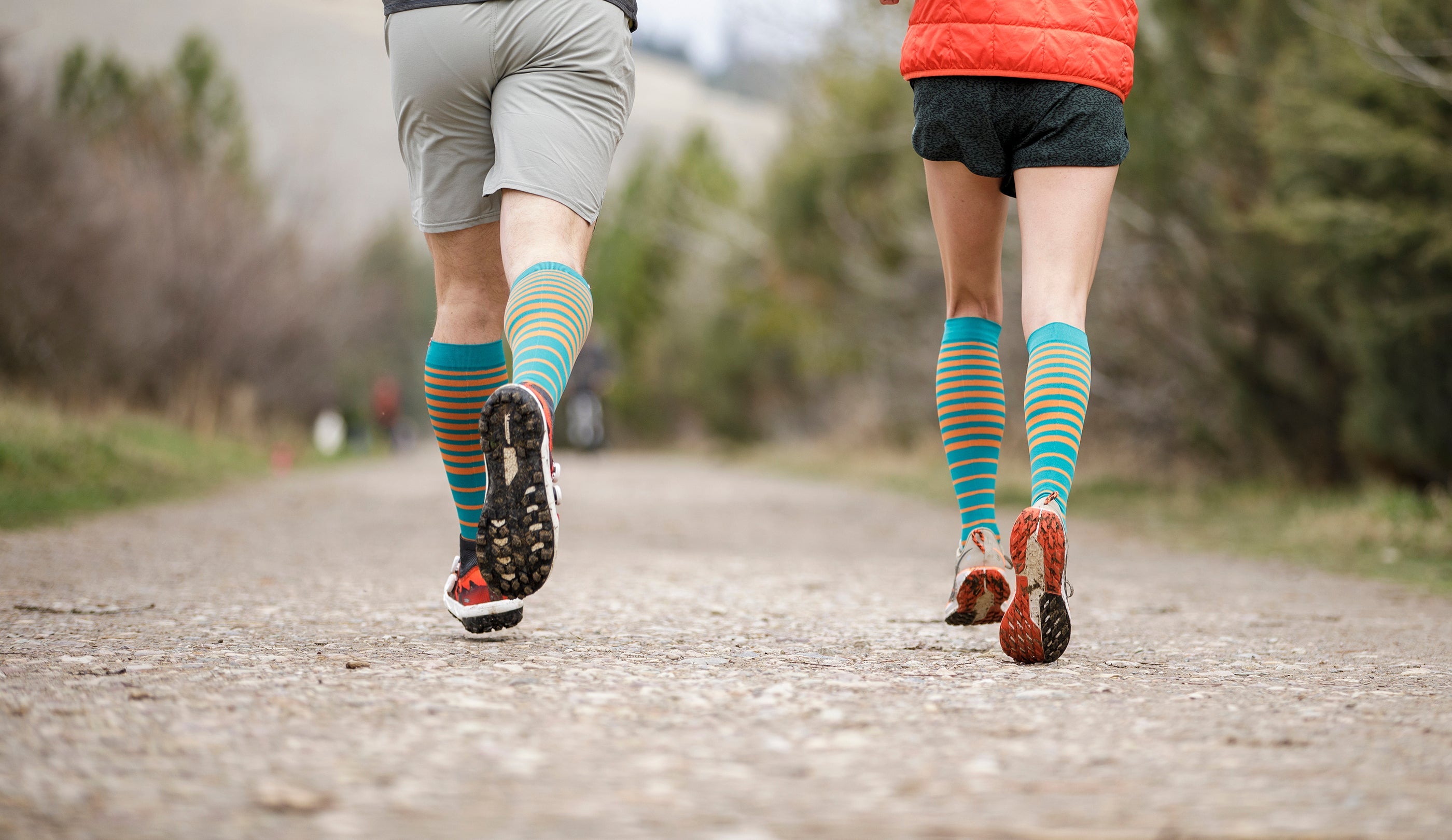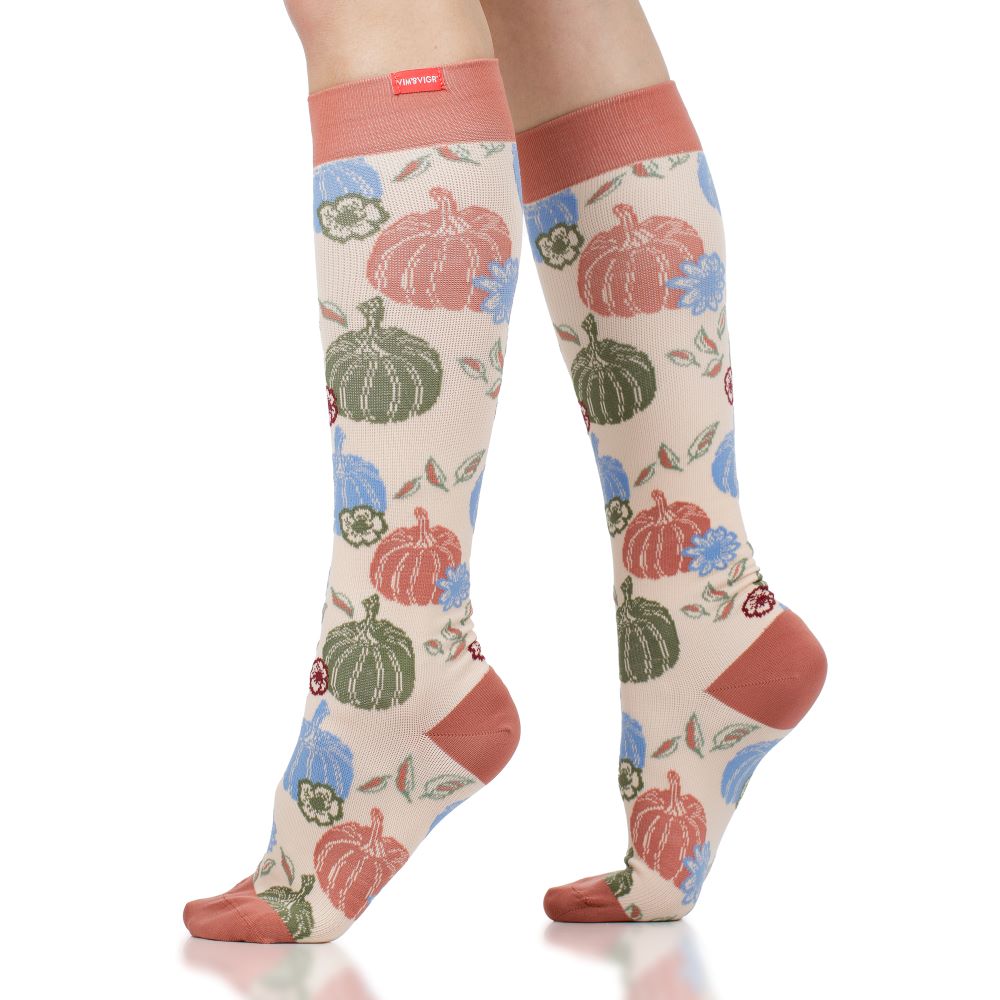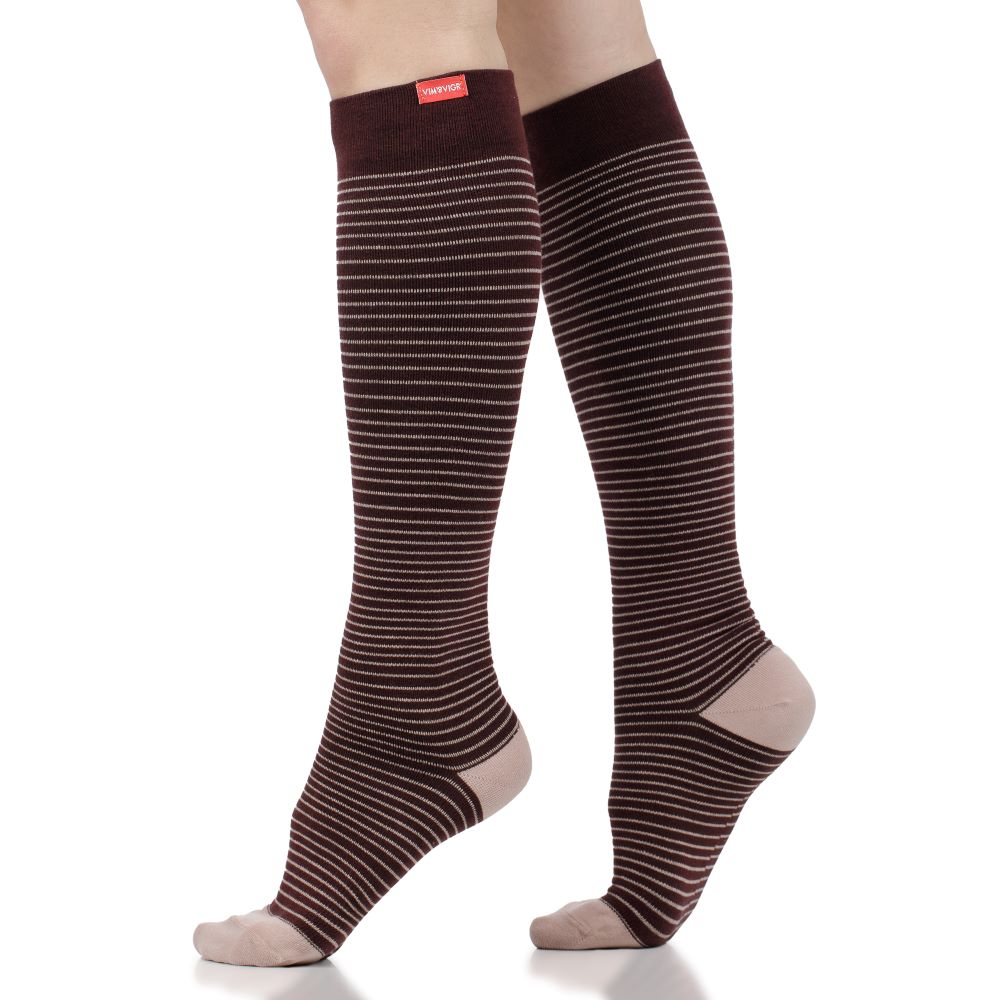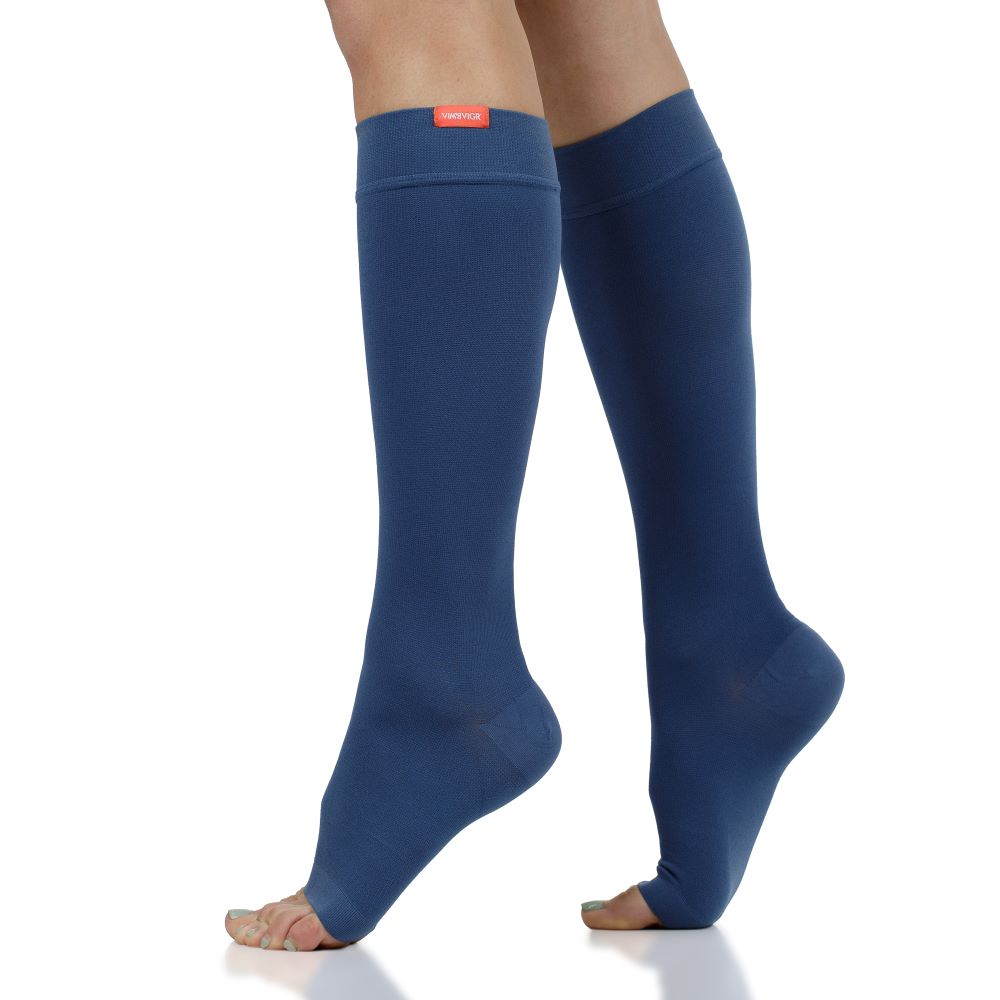How to Elevate Your Legs: Reduce Swelling and Boost Circulation
Leg swelling and edema are common and uncomfortable problems for many people, but elderly populations and women during pregnancy are especially at risk. The Health and Retirement Study reveals that about 20 percent of older US adults (51+) complained of edema between 2000 and 2016. One recommended way to reduce leg swelling or edema is to elevate your legs, especially if you have chronic venous insufficiency.
Elevating your legs reduce leg swelling and soothes aching limbs by:
- Preventing blood from pooling in the lower extremities (also reduces the risk of blood clots and deep vein thrombosis)
- Countering gravitational pressure to help 200-300mL of blood to flow out of the legs
- Helping blood circulate towards the heart, improving overall health
In this article, you will learn how to elevate your legs to lower your risk of edema or swelling so you can feel better and take steps to prevent worse health outcomes like blood clots or deep vein thrombosis.
How to Elevate Your Legs Properly for Maximum Benefits
Consider how gravity works. Just as it pushes down on your body, it also affects how blood flows throughout your body. The more time you spend on your feet, the more likely it is for blood to pool in the legs, ankles, and feet to cause painful swelling. Moreover, if you sit behind a desk all day, that same downward pressure is exerted on your lower leg veins, which also causes swelling. In fact, a 2018 study found that those who work long hours in sedentary jobs (upwards of 55 hours a week) had a higher risk of developing deep vein thrombosis (1.7x more likely), venous thromboembolism (1.5x more likely), or pulmonary embolism (1.4x more likely). So, let us see how to lower your risk of these conditions by taking breaks to elevate your legs throughout your day.

1. Move Into a Comfortable Position
The first step to correctly elevating your legs to reduce swelling and boost circulation is to find a setup that allows you to do this comfortably. This usually means a sofa or bed (so you can recline or lie down). If you have a break room at work, you may be able to use the couch. If you work from home, use your bed to elevate your legs.
An alternative is to position yourself near a wall, either by lying on the floor (make sure to put something underneath your back, for example a yoga mat) or on the bed (assuming this is touching the wall at one end). This is more practical at home, perhaps at the end of the day or when you’ve just come back from a long-haul flight.
2. Position Your Legs Above Your Heart
If you are lying down or reclining, you may need to use a few pillows or a rolled-up blanket to help lift your legs above the level of the heart. Or use the sofa arm rest if you have one. Another alternative is to lift your legs and prop them against the wall as we mentioned above.
The key to getting benefits from elevating your legs is to make sure they are higher than heart level. One study recommends that you elevate your legs between 30 and 60 degrees to reduce swelling. However, another study found that just keeping your legs above heart level is what is needed. A higher elevation may not provide more benefit than a lower elevation for swelling. It may be most important to stay comfortable as you will want to stay in that position for a long time.
What if you can’t lift your legs when laying down? Not to worry. You can get some benefit by lifting your legs off the ground anyway. Use a small chair or ottoman placed in front of you. This will not be as high as bringing your feet above the heart, but it will still change the position of your lower limbs to help counter the effects of gravity to an extent and may help with blood flow out of your legs. And you will feel soothing relief in your feet, especially if you have been wearing tight shoes or high heels!
3. Use Pillows for Support if Needed
Pillows are a great help when trying to elevate your legs. You can use them when you go to sleep at night and also for short breaks of 15-20 minutes at a time, lying back on a sofa or bed. If you do not have extra pillows or cushions, simply roll up a blanket and check that it elevates your legs above your heart level when you lie down.

Wear compression socks to relieve pressure on your lower limbs throughout the day.
How Long Should I Elevate My Legs to Reduce Swelling?
Doctors recommend that if you suffer from edema or leg swelling, elevate your legs for at least 15 minutes at a time three to four times a day. One report recommends that you receive the most benefit if you elevate your legs for 30 minutes each time. This will stimulate blood flow, reduce swelling, and can even help your legs feel re-energized, all while taking the pressure off.
How Often Should I Elevate My Legs?
Ideally, you should elevate your legs several times a day to reduce swelling and edema, especially if you spend a lot of time on your feet. However, this is not necessarily practical for all professions and walks of life. Although 3-4 times a day is optimal, you can also have one longer break when you get home from work (e.g., 30 minutes upon arriving home) and once right before getting ready for bed.
You can also enjoy the benefits of leg elevation while resting at home, adopting the reclining position with some pillows under your legs while you watch TV or read in the evening before bed.
How Does Elevating Your Legs Help with Swelling and Circulation?
Allowing blood to flow back up towards the heart is the key benefit of elevating your legs. This means less blood pooling in the legs, feet or ankles to cause swelling and discomfort. When you spend a long time either sitting or standing, gravity adds pressure on the blood vessels and can cause blood to pool in the lower extremities. When your legs are lifted above the heart, blood flows back towards the heart, improving overall circulation and reducing the strain on blood vessels and your heart.
Who Can Benefit from Elevating Their Legs?
Any person who experiences poor peripheral circulation because of a health condition, lifestyle, or temporary factors, can benefit from elevating their legs. This is because leg elevation reduces swelling, promotes better overall blood flow, and can help soothe inflammation and pain from too much pressure on the lower limbs. However, be sure to consult your doctor if you have any questions.
Primarily, it is those who are “fighting gravity” the most who will find the biggest benefits from elevating their legs. This includes people who stand all day (shop assistants, servers in restaurants and cafes, or hairdressers, nurses etc.) or if you have a job where you sit down most of the time (e.g., working in an office).
Leg elevation also helps reduce swelling and improve comfort levels for pregnant women. During pregnancy, your body has approximately 45 percent more blood and fluids than normal. This increases the risk of edema during pregnancy, while added weight also puts more pressure on the lower legs as you move around. Wearing compression socks during pregnancy will support both peripheral blood flow and help relieve some pressure while you walk and stand. Add a 20-minute leg elevation break every 3-4 hours during the day, and you can reduce swelling in your legs and risk of edema during pregnancy.

Shop compression stockings for pregnancy.
Complementary Strategies to Reduce Leg Swelling
Blood pooling in the lower extremities can have a negative impact on your health. You may develop blood clots or even deep vein thrombosis. Edema caused by lymph fluid or blood pooling around your ankles is also uncomfortable, even painful. Moving regularly and changing the position of your legs so that blood flow is facilitated is a key to reducing the risk of these conditions or preventing them altogether. Luckily, we also have a few more helpful tips for you.
Wear Compression Socks
Clinical research recommends that you use compression garments to reduce feet and leg swelling or even edema. This medical report found that compression socks prevent edema and a 10% increase in fluid in the legs if you sit for 8 hours a day.
Compression socks are easy to wear, extremely versatile, stylish, and offer several adjacent benefits. They boost peripheral circulation, which reduces the risk of blood pooling at the extremities. Their soothing massage also helps relieve pressure and pain from build-ups of lymph fluid. Moreover, you can count on compression socks to support your leg veins and muscles when you stand around a lot, because the supportive material takes some of the pressure off the limbs while improving blood flow and reducing swelling. The result is reduced muscle fatigue and lower impact on your lower limbs.
At Vim & Vigr, we believe in stylish compression to brighten up your outfits while helping you feel fresh and energized throughout your workday. You can choose from a wide range of colors and styles, because compression therapy doesn’t have to mean wearing bland, skin-color hose. Moreover, we are aware that you may want to wear your socks in various different environments, so we have cotton pairs for pretty much any setting, but also cozy merino wool socks to keep your feet warm and dry in winter (or well-ventilated in humid environments). For those who want to exercise in their socks, we recommend moisture-wicking nylon for excellent flexibility and comfort.
Stay Active
We have talked about the importance of moving around and changing positions during the day, especially if you sit for long periods of time. Exercise - even just gentle stretching - also helps reduce leg swelling and discomfort caused by the impact of gravity. In fact, a 2020 study found that stretching the legs can improve circulation throughout the body.
Other simple ways to stay active and benefit your leg circulation include walking regularly. Even small increases in how much you walk can reduce your risk of cardiovascular disease, while soothing the legs and lowering swelling. Try to add a 10-minute walk into your day first thing in the morning and last thing before dinner. It can just be a simple stroll around the block (although brisk walks have been identified as more beneficial for heart health). Wear compression socks during the walk for some additional joint and muscle support. Before you know it, your legs will feel less swollen and a lot more comfortable!
Hydrate Properly & Reduce Salt Intake
A 2020 study of 52 male patients showed that their high daily intake of salty food led to experiencing leg edema. Indeed, the Mayo Clinic advises that eating too much salty food is one of the chief cases of leg swelling. And the British Heart Foundation warns that most adults consume around 40 percent more salt than they should in order to stay healthy.
To counter the negative effects of a high-sodium diet, you should, of course, be aware of the foods you choose to consume on a regular basis. Try to limit the quantity of highly processed food you eat, while also hydrating as much as possible. 1.5 to 2 liters a day is the general hydration guideline, which will support better fluid drainage and improved muscle and joint flexibility.
–
Leg swelling affects us all, whether because of our lifestyle or during periods in our life (such as pregnancy or when being stationary / immobile for a long time, e.g., after surgery). The main reason is gravitational pressure: your lower legs withstand the worst of gravity pressing down on the blood vessels, preventing blood from circulating freely and returning to your heart in a healthy way. Beyond edema, this can cause problems like blood clots and deep vein thrombosis. But there are ways to counter this: leg elevation, movement, compression wear, and hydration all work to improve peripheral circulation and reduce blood pooling and fluid accumulation.
For optimal peripheral blood flow and supportive apparel, pick a stylish pair of compression socks from our Vim & Vigr range and keep elevating your legs regularly.
References
Besharat, S., Grol-Prokopczyk, H., Gao, S., Feng, C., Akwaa, F., & Gewandter, J. S. (2021). Peripheral edema: A common and persistent health problem for older Americans. PloS one, 16(12), e0260742. Read it here.
Kivimäki, M., Nyberg, S. T., Batty, G. D., Madsen, I. E. H., Tabák, A. G., & IPD-Work Consortium (2018). Long Working Hours and Risk of Venous Thromboembolism. Epidemiology (Cambridge, Mass.), 29(5), e42–e44. Read it here.
Goyal A., Cusick A.S., & Bhutta B.S. (2023). Peripheral Edema. In: StatPearls [Internet]. Treasure Island (FL): StatPearls Publishing. Read it here.
Sterns, R.H. (2023). Patient education: Edema (swelling) (beyond the basics). UpToDate. Read it here.
He, H. W., & Liu, D. W. (2016). Passive Leg Raising in Intensive Care Medicine. Chinese medical journal, 129(14), 1755–1758. Read it here.
Seo, D., Kang, H.W., Ahn, D.S., & Song, J. (2020). Effect of leg elevation height on reduced swelling of patients of postoperative acute ankle fractures. J Korean Foot Ankle Soc: 24, 31-36. Read it here.
Soma-Pillay, P., Nelson-Piercy, C., Tolppanen, H., & Mebazaa, A. (2016). Physiological changes in pregnancy. Cardiovascular journal of Africa, 27(2), 89–94. Read it here.
Partsch, H., Winiger, J., & Lun, B. (2004). Compression stockings reduce occupational leg swelling. Dermatologic surgery: official publication for American Society for Dermatologic Surgery [et al.], 30(5), 737–743. Read it here.
Kurosawa, Y., Nirengi, S., Tabata, I., Isaka, T., Clark, J. F., & Hamaoka, T. (2022). Effects of Prolonged Sitting with or without Elastic Garments on Limb Volume, Arterial Blood Flow, and Muscle Oxygenation. Medicine and science in sports and exercise, 54(3), 399–407. Read it here.
Bisconti, A. V., Cè, E., Longo, S., Venturelli, M., Coratella, G., Limonta, E., Doria, C., Rampichini, S., & Esposito, F. (2020). Evidence for improved systemic and local vascular function after long-term passive static stretching training of the musculoskeletal system. The Journal of physiology, 598(17), 3645–3666. Read it here.
Yoshikawa, M., Torimoto, K., Hirayama, A., Kiba, K., Yamamoto, Y., Akashi, Y., Shimizu, N., Tanaka, N., Uemura, H., & Fujimoto, K. (2020). Daily salt intake is associated with leg edema and nocturnal urinary volume in elderly men. Neurourology and urodynamics, 39(5), 1550–1556. Read it here.
Mayo Clinic Staff. (2023). Edema. Mayo Clinic. Read it here.


















Leave a comment